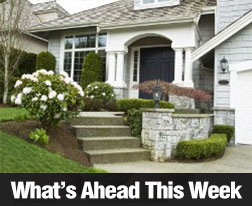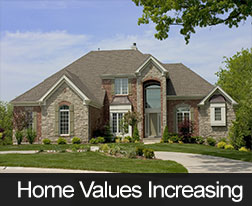 Want to sell your home this summer?
Want to sell your home this summer?
With the help of a real estate professional, you could be signing a closing agreement and on your way to a whole new housing world before winter sets in.
So, get inspired this Fourth of July to liberate yourself from your current home.
A local real estate agent who is an expert in his or her field might be the spark needed to get you motivated, strategically market your home and have potential buyers seeing fireworks at your first open house.
To help with your quest for the perfect home-selling expert, here are three questions you should ask during initial interviews:
What do you know about the local market?
Make sure your agent is up to date on the area’s current listings. He or she needs to know what’s happening in your neighborhood in order to market it and ensure it beats out the competition.
How will you market my home?
Make sure you’re on the same page when it comes to spreading the word about your property. You’ll want to confirm that your agent is Internet savvy and has fresh ideas on how to make your home stand out. It’s always a good idea to ask agents you’re interviewing to provide examples of how they’ve marketed other homes.
What will you do to help me prepare my home for sale?
Successful agents should do a walk-through with you and use their past experience and buyer feedback to give advice on how to stage your home. It benefits both of you to have your home looking its best, so that it sells fast!
In honor of the Fourth of July, take a cue from our forefathers and enlist the services of a good real estate agent to help emancipate you from your current home.
If you’re looking for a Scottsdale real estate professional, I’d appreciate the opportunity help you. Give me a call today or email me to get all of your questions answered.
 What if you could accelerate the mortgage payment on your home so that you own your property several years earlier than your 15 or 30 year term?
What if you could accelerate the mortgage payment on your home so that you own your property several years earlier than your 15 or 30 year term? The past week was active for economic news and mortgage rates. The aftermath of the Fed’s indication that it may start dialing back its multi-billion dollar monthly purchases of Treasury and mortgage backed securities has sent mortgage rates to record highs.
The past week was active for economic news and mortgage rates. The aftermath of the Fed’s indication that it may start dialing back its multi-billion dollar monthly purchases of Treasury and mortgage backed securities has sent mortgage rates to record highs. Imagine that you’ve found the perfect home and are ready to apply for financing. Your home loan approval amount comes back lower than you would have expected and at an interest rate significantly above what you have heard is available on the market.
Imagine that you’ve found the perfect home and are ready to apply for financing. Your home loan approval amount comes back lower than you would have expected and at an interest rate significantly above what you have heard is available on the market. You’ve got a new job offer across the country and you are planning to pack your things, buy a home and make the big move.
You’ve got a new job offer across the country and you are planning to pack your things, buy a home and make the big move. The S&P Case-Shiller Home Price Indices for April indicate that the housing recovery gained ground.
The S&P Case-Shiller Home Price Indices for April indicate that the housing recovery gained ground. Paying off the mortgage on your home faster means that you will not only have the satisfaction of owning your own home sooner, you will also have the benefit of paying much less in interest over the years.
Paying off the mortgage on your home faster means that you will not only have the satisfaction of owning your own home sooner, you will also have the benefit of paying much less in interest over the years. Comments by Fed chairman Ben Bernanke after Wednesday’s FOMC meeting caused havoc in financial markets as investors anticipated the potential effects of any rollback of the Fed’s policy of quantitative easing (QE). Chairman Bernanke said that the Fed may begin reducing its $85 billion monthly purchase of Treasury securities and MBS toward the end of this year.
Comments by Fed chairman Ben Bernanke after Wednesday’s FOMC meeting caused havoc in financial markets as investors anticipated the potential effects of any rollback of the Fed’s policy of quantitative easing (QE). Chairman Bernanke said that the Fed may begin reducing its $85 billion monthly purchase of Treasury securities and MBS toward the end of this year. Spring has sprung and today is the first official day of summer. If you are finally finding time to tend your garden, don’t feel guilty — just get dirty!
Spring has sprung and today is the first official day of summer. If you are finally finding time to tend your garden, don’t feel guilty — just get dirty! Are you buying a property as your second home? Perhaps you are looking for a small cottage or apartment where you can escape to for your vacations, or maybe you want to have another home closer to your relatives?
Are you buying a property as your second home? Perhaps you are looking for a small cottage or apartment where you can escape to for your vacations, or maybe you want to have another home closer to your relatives?